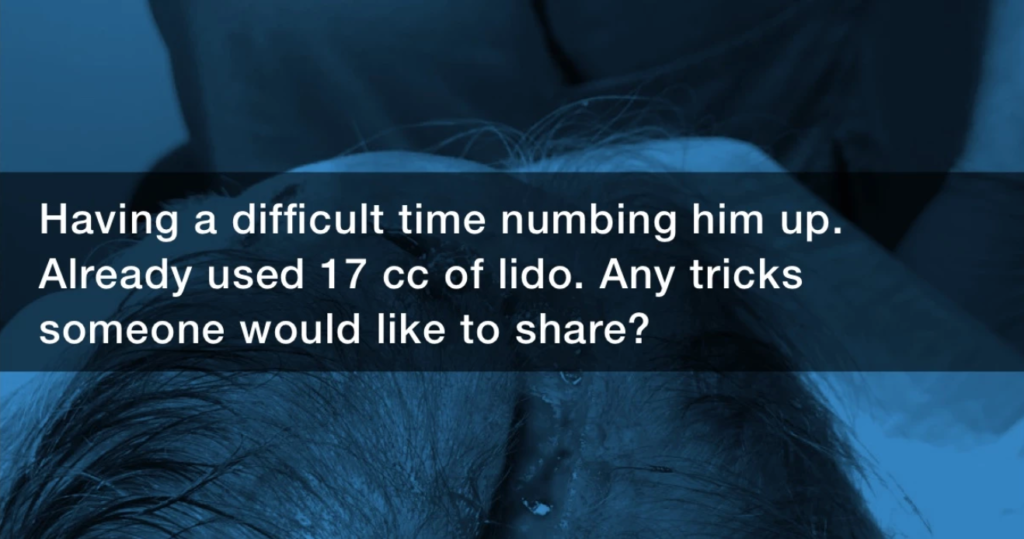
A person’s scalp is torn open when the metal stairs of their recreational vehicle fall on their head. They are immediately taken to the emergency department, where a CT scan comes back normal and no skull damage is found. The care team turns their attention to the wound, but the anesthetic doesn’t appear to be working. A nurse shares the case on Figure 1, explaining the dilemma:
“Having a difficult time numbing him up. Already used 17 cc of lido [lidocaine]. Any tricks someone would like to share?”
An emergency physician gently questions the nurse:
“Make sure you are not injecting saline, 17 cc of lido should have done the job. But I am just kidding of course. Wouldn’t be a terrible idea to consciously sedate him.”
A neurologist recommends lidocaine with epinephrine, a vasoconstrictor that one nurse refers to as “the chemical tourniquet.” Several other healthcare professionals suggest other anesthetics.
Eventually, a technician notices something in the case photograph:
The technician shares two studies on the subject, titled Midazolam Causes Less Sedation in Volunteers With Red Hair and Anesthetic Requirement is Increased in Redheads.
“Patient seems to have reddish hair, which is associated with a gene that causes resistance to sedation and analgesics. Be careful with this one.”
Another nurse concurs: “It’s truly a thing. I had a tiny 8-year-old girl who got enough sedation to knock a wrestler out because she was a redhead.”
The patient’s nurse indicates that this was in fact the case. In the words of one medical student: “Wow! This is new info for me. Thank you for sharing.”
Want more clinical cases?
Join Figure 1 for free and start securely collaborating with other verified healthcare professionals on more than 100,000 real-world medical cases just like this one.